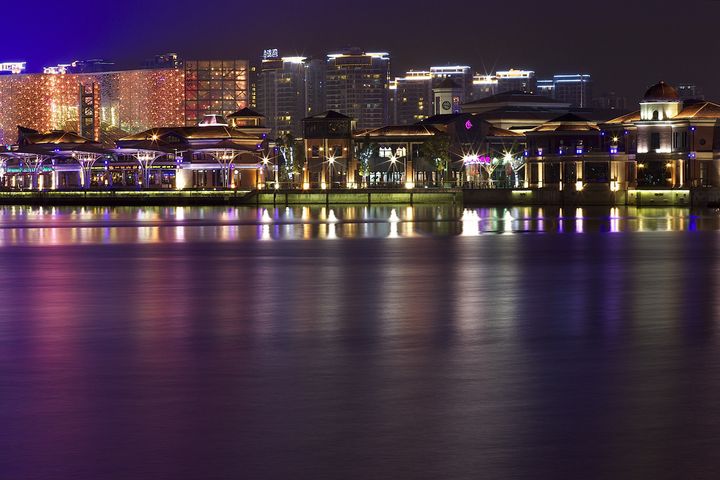 It Takes a Village
It Takes a Village(Yicai Global) Oct. 27 -- At first glance, China's consumption of natural resources appears pretty catastrophic. Home to the world's second-largest economy and often referred to as the world's factory, China is racking up a huge resource deficit, and its rapid growth since the turn of the millennium has largely been powered by cheap, dirty coal. In 2014, the country generated 3.2 billion tons of industrial solid waste, of which only 2 billion tons were recycled, composted, incinerated or reused.
The good news is that these and other sobering statistics have been a wake-up call for China. For the past 10 years, the nation has led the world in the formulation of policies designed to lower resource consumption and cut air pollution by closing industrial loops and transforming outputs from one manufacturer into inputs for another, thus creating a "circular economy."
Another high-profile effort is the 13th Five-Year Plan (FYP). At a speech delivered at China's People's Congress on March 5th, 2016, Chinese Premier Li Keqiang stated that the Plan would provide a guide for implementing "green development" and for aligning it with economic growth. "Achieving green growth means reducing energy and resource intensity, and decoupling the emissions of key pollutants from economic growth and urbanization," said Li.
As a signatory of the Paris Climate Agreement, China has pledged that its carbon dioxide emissions will peak (and then begin to drop) by 2030. Current efforts have proved promising, and the country is on track to surpass the climate targets. But China knows it must do more. Indeed, it needs nothing less than a sweeping new industrial development model that features energy conservation and low carbon emissions. The "eco-industrial parks" that are springing up throughout China are designed to do just that.
Eco-industrial parks are industrial zones that lower environmental pollution and conserve resources when resident companies use one another's byproducts and share resources. The earliest and most famous example is Denmark's Kalundborg Eco-Industrial Park. Begun in 1959 and composed of nine private and public enterprises, it pioneered "industrial symbiosis" in 1972, attracting interest from around the world.

Emulating this model was of special interest to the Chinese, given that more than 50 percent of the country's manufacturing activities are carried out in industrial parks and processing zones. Already, facilitating collaboration and circular consumption habits within these parks has contributed to a decline in the use of natural resources—Chinese coal consumption dropped by 6 percent this year.
The leader of the eco-industrial pack is the sprawling Suzhou Industrial Park (SIP), the love child of a bilateral project between Singapore and China. Located 100 km northwest of Shanghai, it was founded in 1994, covers 8,000 hectares (with 20,000 available for further expansion) and is home to more than 25,000 companies.
Just as the Danes did almost half a century ago, companies in SIP have found new and innovative ways to use one another's production wastes or byproducts as raw materials, contributing to a highly efficient and low-cost circular economy. The scale of these efforts, however, dwarfs the Kalundborg operations.
Take a short stroll through SIP and you'll come across multiple examples of companies upcycling one another's waste. Among them is the Suzhou Industrial Park Sludge Treatment project; established in 2015, it pools together sludge, sewage and co-generation power plants (all are adjacent to one another). With an investment of 216 million CNY (US$ 33 million), the project is set to last five years. Assuming the annual disposal of 108,000 tons of wet sludge, it will reduce carbon dioxide emissions by an estimated 31,000 tons each year. Using the residue as a fuel source will reduce coal consumption in SIP by 17,000 tons, and incorporating the leftover lime-ash as a building material will eliminate 10,000 tons of solid waste from the eco-industrial park.
Despite this and other impressive projects, SIP has faced its fair share of challenges. First and foremost is the shift in industrial patterns as low-end, labor-intensive industries such as electrical manufacturing are elbowed out of the park by international high-tech and service industries such as nanotechnology and finance. But analysts argue that there should be space for both large and small firms on SIP; if not, locals could be priced out of the area, and the cost of living could skyrocket.
These and other issues aside, SIP provides a glimpse of the future to which China aspires—one where green development and circular economy will promote investment, provide Chinese products and technologies with a competitive edge in the international market—and help China seriously clean up its act.